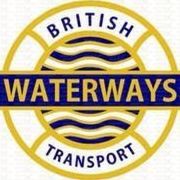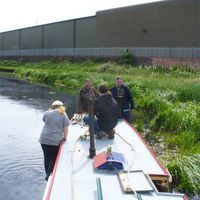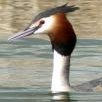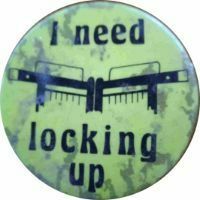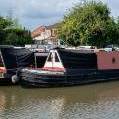-
Posts
4,204 -
Joined
-
Last visited
-
Days Won
4
pete harrison last won the day on October 10 2017
pete harrison had the most liked content!
Profile Information
-
Gender
Male
-
Location
Stockton-on-Tees
Recent Profile Visitors
21,734 profile views
pete harrison's Achievements
Veteran (11/12)
494
Reputation
-
Ian Edmondson started following pete harrison
-
Guardian started following pete harrison
-
This thread has turned into several different topics, so I am not going to respond to anything else unless it is directly related to this threads title 'historic boats for sale online'. All of these other topics are interesting and I am happy to contribute to them - but they need to be established in their own threads
-
I would say these are enthusiast / owner made plates. I am not aware of S&L fitting plates to their boats, instead having a fleet number painted in white on the inside of the fore end and stern end - but this was not unique to S&L. Noah Hingley, Netherton was a black country foundry owner (amongst other things) and operated numerous day boats across that area. When Noah Hingley & Sons Ltd. ended their business some of their boats ended up with S&L, as did the boats of numerous other carriers
-
Back in the 1970's I was not very interested in numbers or boat history, but very interested in boating and learning the skills involved in all of the aspects of boating I could. I did not have a great interest in B.C.N. day boats back then, but went on too many to remember) as they were still everywhere, with quite a number still in trade mostly as rubbish boats or hoppers. I only developed an interest in B.C.N. day boats when I acquired a set of B.C.N. Company gauge registers in the early 2000's. Having said that the iron day boat on the bank looks like BESSIE to me, which is BCN 14695 and fleet number 18 for its first owner and 112 for Stewarts and Lloyds Ltd.. I am unable to identify the wooden day boat at present but I suspect it will have come from S&L. edit = When we cleared out the redundant day boats from Stewarts and Lloyds Ltd. in 1976 the ends of the boats were lettered with S&L (red top bends) and British Steel Corporation (blue top bends) in equal(ish) numbers, and I think some may still have had Noah Hingley on them
-
As far as making buildings out of boat bottoms is concerned it has been going on for donkeys years, and the Black Country Museum was keen for us to break these old boats up at that time. Funny how things change and people have got all dewy eyed and fluffy clouded about these boats now. I pulled a day boat (S&L 101) up onto this dock a couple of times in the late 1970's using nothing more that a turfer and a couple of jacks, and of course it only needed a jack to put it back in again. Those were good times and loads of fun, but I am quite sure it would not be allowed nowadays - especially as this dock now has a brick face against the water. edit = the Ice-Boat is NORTH STAR
-
Woolwich is a reference to where it was built = Harland and Wolff Ltd., North Woolwich, London. Small is a reference to the depth of the hull from gunwale to bottom of the bottom = 4'2'' for VELA (medium = 4'6'' and large = 4'9''). butty refers to a boat that is unpowered but used in tow behind another boat, more commonly referred to as such when towed by a motor narrow boat. Please do not be intimidated by the knowledge on here and keep asking questions, but it might be better to start a new subject (thread) specific to VELA.
-
VELA was built as a 71'6'' unpowered small Woolwich butty, i.e. it was designed to be towed behind a powered boat or motor. Once out of trade VELA was cut in two, with each end rebuilt into pleasure boats - the original fore end being used as a fore end and the original stern also used as a fore end, and both fitted with conventional counter sterns. The boat you have bought is the original stern being used as a fore end. Do you know much about these old working boats edit - the photographs on Ebay when VELA was for sale a few weeks ago showed it having a welded conventional counter stern rather than a 'flat traditional stern'. I am sure there is some confusion in the terms you / we are using - and congratulations on your acquisition.
-
As a teenager I broke up several wooden boats so that their bottoms could be used for the walls of buildings at The Black Country Museum. Perhaps I am fortunate in not being sentimental about narrow boats and I have no problem with their 'circle of life'. I like the idea of a boat that is life expired donating its parts to keep others going (as with human organ donation), but I am not meaning parts being built into modern boats to give them some perceived credibility or added value. Every boat can be rebuilt and rebuilt again, but as you say the costs can be prohibitive - and in my opinion this has been the position with wooden narrow boats for a long time, let alone finding people with the skills to maintain / rebuild them properly. Like many owners I am spending far more on my boat restoration than its end value will be, but because my boat is steel hulled it just feels like a better bet long term (but probably isn't). Of course it is a great shame when any boat is broken up, but this is a part of every boats history whether today, next year or any time in the future. Things seem to have got a lot more sentimental since these boats have become pre-fixed 'historic' - but lets hope that DANE's future can be secured
-
Seems like a no brainer to me - buy DANE and re-fit the Bolinder into TOWY - offset some of you costs by selling TOWY's National 2DM and asset stripping DANE - sell DANE's remains to a 'dreamer' for £1,00. The result is you maintain some of your emotional attachment as you will still have DANE's Boliinder - TOWY regains some of its historical relevance - there is the opportunity for a Grand Union motor to regain a historically relevant engine and you put a smile on somebody's face by selling them a boat for £1.00. Some of this is meant in jest but you can probably see where DANE's future lies
-
Charlie Aldrick owned the 'Runcorn Header' motor RICHARD. I remember it was latterly at Hockley Port but I do not recall seeing it after about 1980
-
Email sent to your business address
-
WIDDECOMBE FAIR was indeed at Cowroast during the 1970's but was a Willow Wren 1962 conversion of the large Ricky COUGHTON, complete with a Seffle 7-8hp. There was another house boat at Cowroast throughout the late 1960's and 1970's that was a 'Runcorn Header' and named BETTY By 1984 WIDDECOMBE FAIR / COUGHTON ended up in Bristol (goodness knows how it got there as this pre-dates the opening of the K&A), and a friend of mine bought it with a stripped out cabin but retaining the Seffle. The last I heard is that the hulk of this boat is amongst several awaiting attention on the Troy Cut near Rickmansworth edit = Balliol - did you get my PM regarding health registration certificates, sent several weeks ago.
-
And I think this is all these terms are - nick names, some applied historically and passed down and some made up by enthusiasts. I think there will also be regional variations, just as there are with other types of boat. The important thing to me is that when these terms are used we all know the type of boat being referred to, and although I had not previously heard the term 'Runcorn Header' I can instantly identify the type by the similarity to the other terms used
-
I have never heard the term 'Runcorn Header' to describe these boats that were unique to the north western waterways - well not until this thread. I have heard them called 'Runcorn Boat', 'Bridgewater Boat', 'Simpson Davies' (a company based at Runcorn) and 'Wooden Header', the last of which is the most miss-leading as I understand the header is a reference to the large wooden post built into the stern end and fore deck and is in common with some day boats on the B.C.N. and many of the narrow boats operating on the River Severn, although those on the River Severn are generally known as 'Severner'. These north western boats are very distinctive as they were huge, in so much that they had a very deep hold (six planks I believe) and a very shallow cabin, along with their headers at each end (as well as a T stud). The vast majority of these boats post 1877 appear on the Runcorn health register and Manchester health register, although much of the latter is incomplete. A handful of motors were later introduced to a similar overall design to the horse boats but with a sort of skirt built around to produce a counter whilst maintaining a horse boat type rudder - again quite unique to the north west. Clearly these boats played an important role as general cargo boats, being built locally and working locally throughout their commercial lives
-
Ironically having built that forecabin your parents bought the butty DITTON two years later
-
DANE's forecabin was fitted in 1991 according your old man


